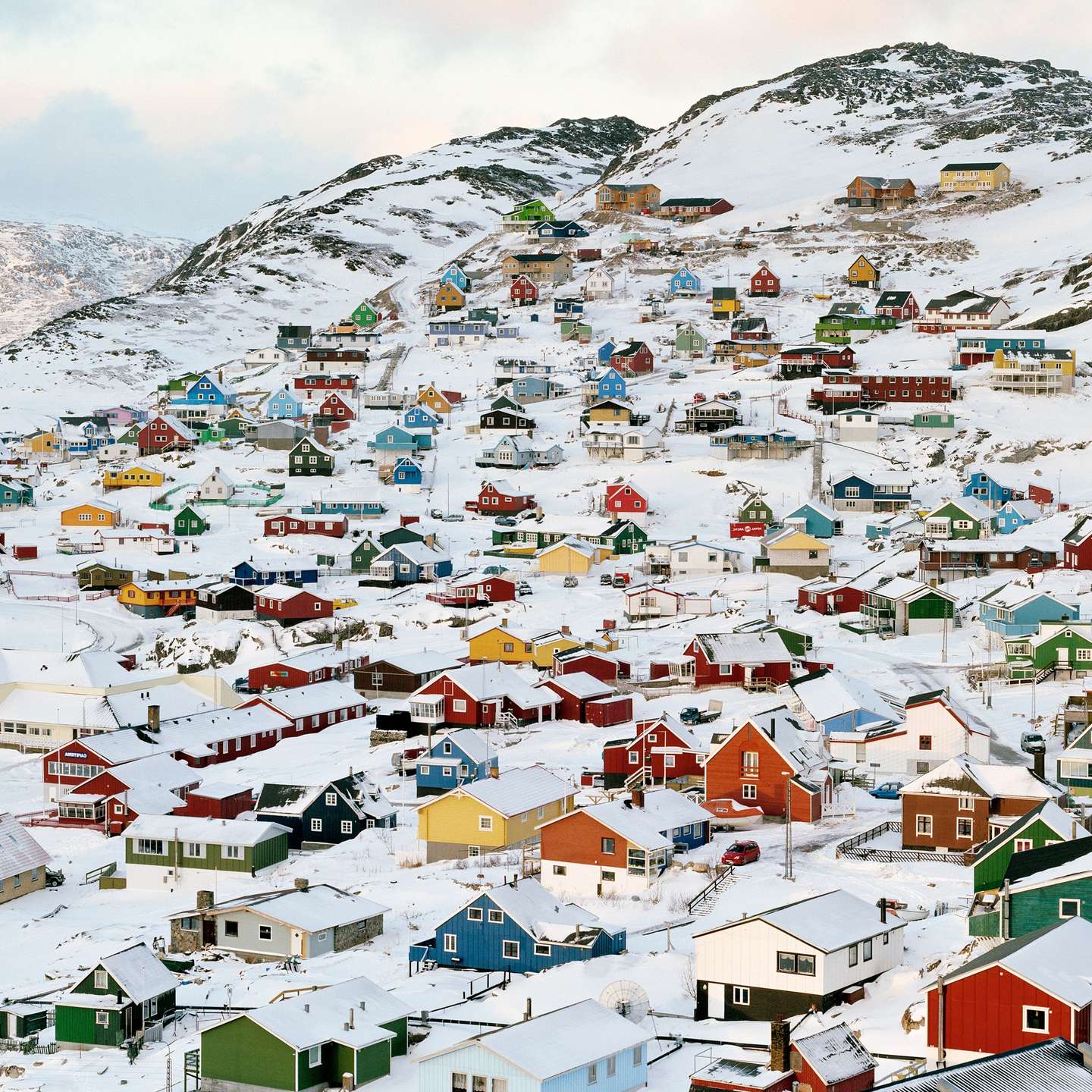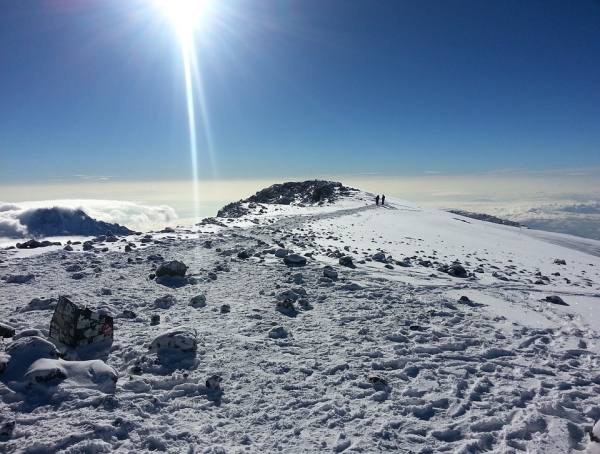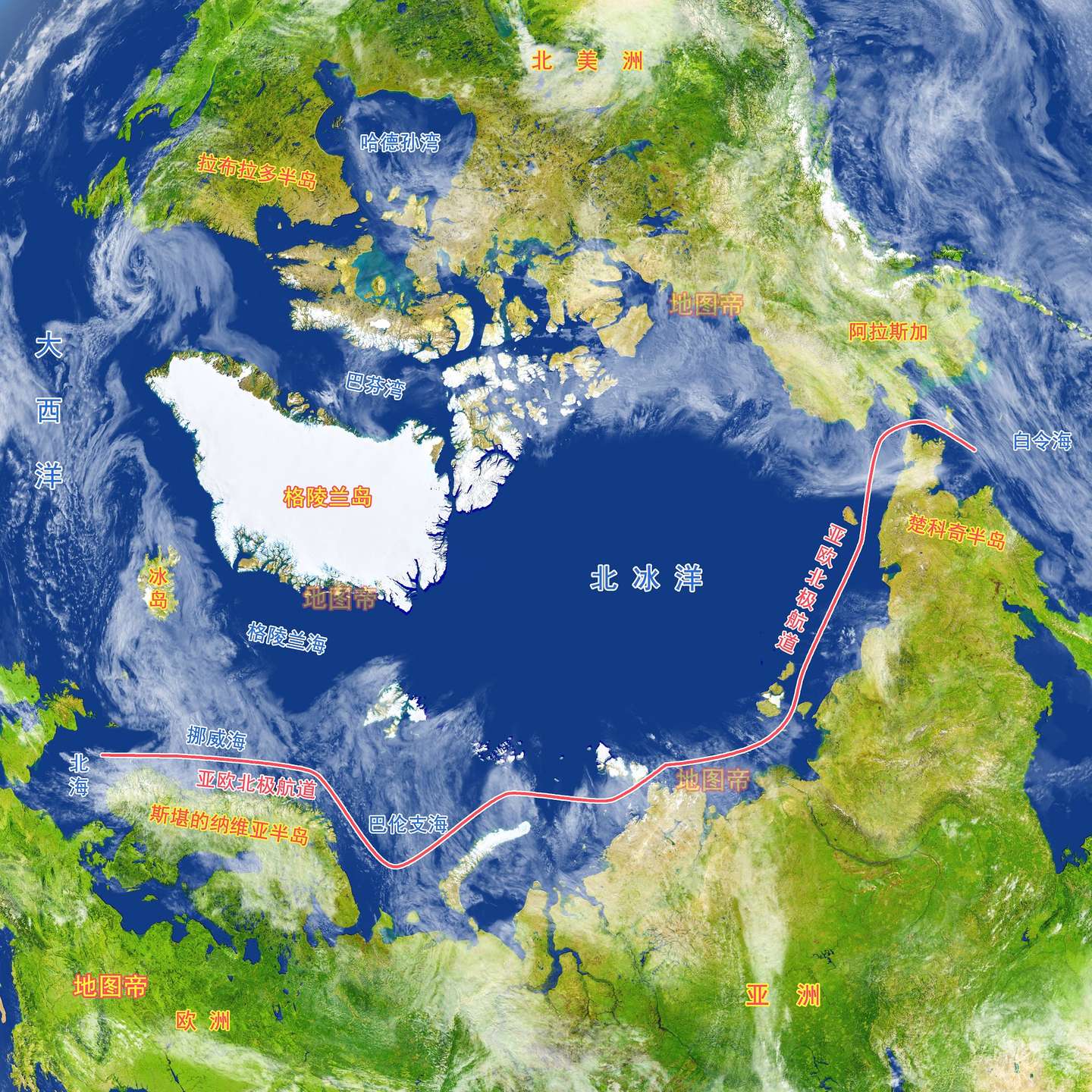【能源与环境】 | Energy & Environment
By Yibai, Jointing.Media, in Shanghai,2022-08-18
Recently, news about the record-breaking melting of glaciers in Greenland appeared in financial news. There are reports that the world’s top billionaires are going there for mining.
The acceleration of ice and snow melting in Greenland is caused not only by the global climate change but also by the capital warming up this natural “permafrost” and turning it into a hot market. On the west coast of Greenland, the wealthiest investors in the world are funding a massive mineral exploration project, hoping to find the crucial mineral that will power hundreds of millions of electric vehicles.

According to media reports, 30 geologists, geophysicists and other relevant personnel are currently stationed at the exploration site on the west coast of Greenland. These individuals are collecting soil samples, operating drones and helicopters equipped with signal transmitters, and analyzing data with the help of artificial intelligence, all in the hopes of accurately locating drilling sites as early as next summer. The project is a joint venture between US-based mineral exploration company Kobold Metals and British mining giant Raven Resources.
Greenland’s literal meaning in Danish is “green land” (Grønland), while the English translation “Greenland” can be interpreted as an “oasis.” This impression inevitably brings to mind the science fiction film Ready Player One, released in 2018. In the film, humans search for Easter eggs in a virtual world called “the Oasis,” hoping to take over and become the richest person in the real world, while in reality, the wealthy are searching for minerals in “Greenland.” The comparison is, amusingly, quite apt.
Glaciers Melting at an Accelerated Pace
According to data, the ice sheet of Greenland covers an area of 1.8 million square kilometers, second only to Antarctica’s ice sheet. The average thickness of its ice layer is about 2300 meters, and the average temperature is around minus 31 degrees Celsius. The melting of Greenland’s ice sheet began in the 1970s. Since 1980, the rate of loss of the Greenland ice sheet has increased by six times. The reasons for the accelerated melting of glaciers are two-fold: the rising temperature caused by global warming leads to more surface ice melting, and warm Atlantic seawater begins to erode the glaciers from below.
The period from 2011 to 2020 was the warmest decade on Earth since 1850. The global average temperature is 1.2℃ higher than the pre-industrial level (the average value from 1850 to 1900). The current sustained weather pattern hints at a peak in glacier melting.
In 2019, Greenland lost 532 billion tons of ice, a historic high and double the annual average since 2003.
On August 27, 2020, the largest ice shelf in the Arctic, the 79N glacier (also known as Spalte), located in northeast Greenland, broke apart, with a 110 square kilometer ice tongue breaking off and breaking into many icebergs that floated on the water’s surface.
In 2021, Greenland experienced the largest rainfall in 71 years, lasting for 9 hours. The ice sheet underwent two intense melting processes, and 8 billion tons of ice cover melted every day.
Between July 15th and 17th of this year, 6 billion tons of melted water flowed into the ocean from Greenland each day, and the amount of ice and snow melted in three days could fill 7.2 million standard Olympic swimming pools.

Glacier melting data has repeatedly broken records, leading many to believe that the countdown to the disappearance of the Greenland ice sheet has begun. Satellite data over the past 40 years has shown a significant reduction in glaciers on the island. Even if global warming were to stop now, the ice sheet will continue to shrink. A study published in Nature Communications Earth and Environment shows that Greenland’s glaciers have already crossed a critical point, where the amount of ice flowing into the ocean from glaciers exceeds the annual snowfall that replenishes the ice sheet.
A study published by Nature magazine at the end of 2019 showed that the Greenland ice sheet lost nearly 4 trillion tons of ice from 1992 to 2018, causing the global sea level to rise by about 10.6 millimeters. Additionally, a report released in October 2020 indicated that, based on high-carbon scenarios, the mass loss of Greenland’s glaciers during this century may exceed any period in the past 12,000 years, as shown by the establishment of cross-millennial, high-resolution simulations of the Greenland ice sheet.
Another concerning issue, in addition to the rise in sea levels, is that the melting water from Greenland is slowing down the Gulf Stream in the Gulf of Mexico. The Gulf Stream, or more precisely the Atlantic Meridional Overturning Circulation (AMOC), brings warm water from the equator to the North Atlantic and cold water to the deep sea, and is the reason for the mild climate in Western Europe. Over the long term, sustained global warming could further weaken the AMOC through changes in the hydrological cycle, reduction of sea ice, and accelerated melting of the Greenland ice sheet.
In August 2018, researchers at the Potsdam Institute for Climate Impact Research in Germany reported in Nature magazine that since the mid-20th century, the strength of the AMOC has decreased by 15%. The weakening of the AMOC is believed to have had an impact on European weather, as seen in the record cold snap in the Atlantic in 2015, which was thought to have contributed to the European heatwave of that year. Model simulations further suggest that the weakening of the AMOC could become the primary cause of “future changes in summer atmospheric circulation over Western Europe,” possibly resulting in increased storms in Europe. The weakening of the AMOC is also associated with the rising sea levels above average on the East Coast of the US and the worsening drought in the Sahel region of Africa.
The search for “oases” is endless treasure hunting
Since its establishment five years ago, BEV has set up four risk investment funds with a total size of $2.2 billion (including one euro fund), invested in 112 projects worldwide, and exited 4 projects. A small portion of its funds has also supported some public welfare projects. BEV aims to double government investment in clean energy innovation within five years, promote private capital investment in excellent clean energy technology companies, and promote knowledge sharing in the clean energy field. Its official website displays the belief of the former world’s richest man in using technology to save humanity’s future.

Although it is not true that billionaires have actually formed a consortium to mine in the “oasis,” it is an undeniable fact that the desire for capital to control resources and the ever-growing thirst for them, just like the rich mineral resources in Greenland, exist. The warming of the earth has caused the melting of Arctic glaciers, and the Arctic Ocean route has drawn the attention of coastal countries. Everyone wants to gain an advantage in future national competition.
While most of the Arctic region is in the Arctic Ocean, a large part of it is under the sovereign jurisdiction of the Arctic states. The United States, Canada, and Russia have each authorized their respective secondary government agencies to govern Alaska, the northern territories of Canada, and Russia’s independent political entity in the Arctic region. The indigenous people of the Arctic have also been given different rights. Finland, Sweden, and Denmark are all members of the European Union, but Greenland decided not to participate in the European Economic Community at the time, so Greenland has extensive autonomy. Geographically, Greenland is an important military fortress.
Global warming has entered an accelerated stage, and since it is impossible to stop the melting of glaciers, resources that were originally preserved for future generations can be mined from the land that glaciers have retreated from, in order to seize market opportunities and gain more market share. “Capable of reaching the moon, and capturing fish in the deep sea,” this is why technology needs to continue to breakthrough (so there is the “Breakthrough Fund”?), and it is also one of the driving forces for continuous technological progress and sustained capital investment.
The degree to which resource extraction contributes to the accelerated melting of glaciers still needs to be observed and demonstrated by scientists through data, although data generally lags behind established facts. In addition to hoping that advanced technology can minimize environmental impacts as much as possible, what ordinary people can do may be to practice energy conservation and emission reduction in their daily lives.
The book “Limits to Growth,” first published in 1972, has long since pointed out that human development is not sustainable. Based on the data available then, the book concluded that the impact of the human ecological footprint had already exceeded the limit, the feedback loops of the ecosystem had fallen behind, and its self-recovery capacity had been severely damaged. If the current rate of resource consumption and population growth continues, the growth of the human economy and population will reach its limit in just a century or even less. The report calls for a transformation of the development model from unlimited growth to sustainable growth, and to keep growth within the limits that the Earth can sustain.
In 2008, Australian scholar Graham Turner published a paper titled “Comparing the Limits to Growth with Thirty Years of Reality,” which confirmed that the changes in industrial production, food production, and pollution in the past thirty years are in basic agreement with the predictions made in “Limits to Growth.”
The irreversible melting of glaciers has already passed the critical point. What about the fate of humanity?
Editor’s Note:
Only 3% of the water on Earth is freshwater, primarily in the form of glaciers. 0.036% of freshwater exists in lakes, rivers, and reservoirs, and 0.001% of freshwater exists in clouds or as water vapor. Nearly 90% of the Earth’s ice is in Antarctica, with the rest mainly in Greenland. If all of the ice in Antarctica were to melt, it would raise sea levels by 60 meters. However, even if all the water in the atmosphere were to turn into rain and fall evenly across the globe, it would only deepen the oceans by 2 centimeters.
The ocean is the true powerhouse of the Earth’s surface activity. In fact, meteorologists increasingly view the ocean and the atmosphere as a single system. The amount of heat delivered daily to Europe by the Gulf Stream is equivalent to 10 years of global coal production. This is why the winter climate in the UK and Ireland is relatively mild compared to Canada and Russia. However, water heats up very slowly, so even on the hottest of days, the water in lakes and swimming pools is still cool.
Seawater is not a homogeneous body. Differences in temperature, salinity, depth, and density among seawater in different regions have a great impact on the way heat is transferred through the ocean, which in turn affects the climate. The main carrier of heat transfer on Earth is known as thermohaline circulation. It originates from slow ocean currents in the deep ocean: surface seawater reaches Europe and increases in density, sinking to the bottom and slowly returning to the Southern Hemisphere. This batch of seawater reaches Antarctica and encounters the Antarctic Circumpolar Current, pushing it forward into the Pacific Ocean. This process is slow, with seawater taking 1,500 years to flow from the North Atlantic to the central Pacific. However, the amount of heat and water it transports is considerable, which has a significant impact on the climate.
Reference:
- https://www.sohu.com/a/576972403_121345914
- https://www.cas.cn/kj/202011/t20201123_4767728.shtml
- https://new.qq.com/rain/a/20210807A08VYS00
- https://zhuanlan.zhihu.com/p/348913236
- https://www.cdstm.cn/gallery/hycx/qyzx/202010/t20201031_1036518.html
- https://zhuanlan.zhihu.com/p/96802213
- https://www.marketscreener.com/quote/stock/BLUEJAY-MINING-PLC-15082161/news/Bluejay-Mining-KoBold-Metals-signs-US-15m-deal-to-earn-into-Disko-nickel-project-in-Greenland-36128015/
- https://www.crunchbase.com/organization/breakthr
- ough-energy-ventures
- https://www.crunchbase.com/organization/kobold-metals
- https://philanthropynewsdigest.org/news/breakthrough-energy-coalition-launches-1-billion-ventures-fund
- https://www.breakthroughenergy.org/
Translated by ChatGPT Next
Edited by Wind
Image Source:Ditudi、Pixabay
Ralated:

![[Recruiting 2011] Jointing.Media](http://jointings.org/eng/wp-content/themes/news-magazine-theme-640/cropper.php?src=/cn/wp-content/uploads/2012/06/123.png&h=50&w=50&zc=1&q=95)









